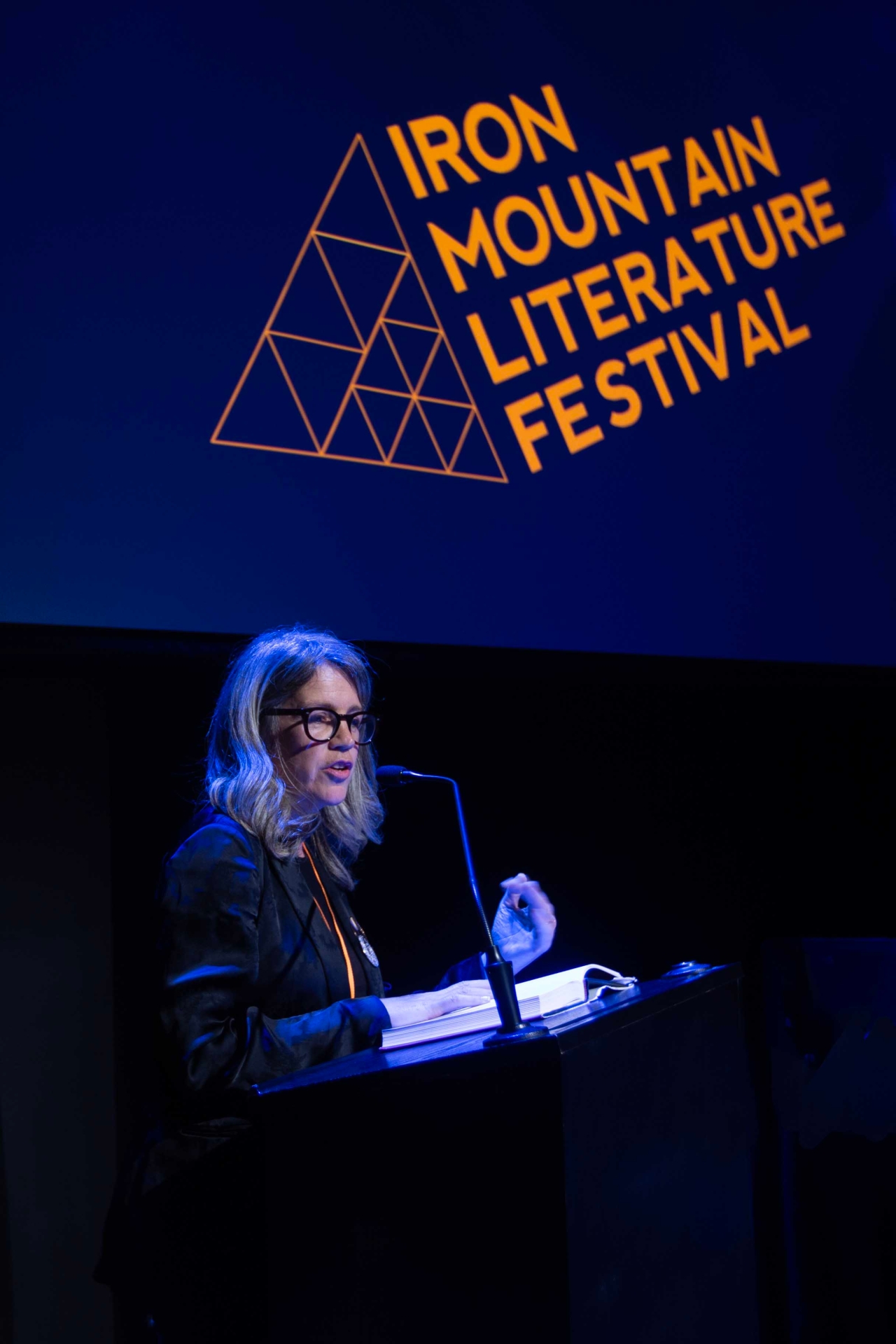
In conversation with Author Bridget Hourigan. Photos Brian Farrell.
At this year’s Iron Mountain Literature Festival (Oct 3–5) at The Dock Arts Centre, Carrick-on-Shannon, writer Bridget Hourican drew a rapt audience into the shadowed world of nineteenth-century poet James Clarence Mangan, reading from her acclaimed study Finding Mangan: The Lives and Afterlives of Ireland’s National Poet.
Mangan — author of Dark Rosaleen and A Vision of Connaught in the Thirteenth Century — remains Ireland’s quintessential “poète maudit”: elusive, magnetic, and impossible to pin down. Hourican traced both the man and the myth, from his green-tinted spectacles and twin umbrellas to his stubborn resistance to propaganda while writing for The Nation during the famine. “He just wouldn’t give them the bellicose war poems they wanted,” she noted.
The talk illuminated Mangan’s uncanny afterlife in modern culture, not least through Shane MacGowan, who — as Hourican recounted — once claimed a cloaked figure visited him during a binge in Thailand. Only later did he recognise the apparition as Mangan, “the Man in the Cloak,” a vision that seeped into MacGowan’s songwriting. Hourican’s own gateway was similarly visceral: a late-night lock-in in the Liberties where MacGowan named A Vision of Connaught in the Thirteenth Century as his favourite poem. She looked it up the next morning and was “electrified.”
That spark became a decade-long pursuit. “I feel like Mangan took possession of me and made me write him out,” Hourican said — a confession that neatly captures the book’s driving force. What began as a short commission grew into a meticulous excavation of a poet who, in Hourican’s phrase, moves “like mercury”: every time you grasp him, he slips and divides.
Hourican also explored the paradox of Mangan’s famine-era masterpiece Siberia. Without once naming Ireland, it conveys hunger, desolation and historical terror in bare, hard imagery — a modern poem avant la lettre. That obliqueness, she argued, is why Mangan keeps returning each generation, remade by new readers and musicians.
The evening’s atmosphere was deepened by luminous musical interludes from master accordionist Máirtín O’Connor — joined by Cathal Hayden (fiddle/banjo) — whose tunes echoed Mangan’s lyrical melancholy and the resilient pulse of Irish music. O’Connor’s storied discography (The Connaughtman’s Rambles, The Road West, Rain of Light) framed the reading with texture and lift.
Personal notes threaded through the discussion. Hourican spoke movingly about the sudden death of her husband, writer Frank McGuinness, during the book’s gestation. He remains part of the work — present on the page and in the dedication — just as Mangan remains a living pressure in Irish letters.
In Finding Mangan, Hourican doesn’t tidy the legend; she lets it breathe — street-corner eccentric, famine witness, nationalist and refuser-in-chief, cult writer who keeps resurfacing. The result is a portrait that feels immediate and unsettling, a reminder that some voices are too quicksilver to fix — and that’s precisely why they endure.
READ MORE: Thrilling Connacht Gold Leitrim SFC Semi-Final leaves fans breathless after dramatic draw

Subscribe or register today to discover more from DonegalLive.ie
Buy the e-paper of the Donegal Democrat, Donegal People's Press, Donegal Post and Inish Times here for instant access to Donegal's premier news titles.
Keep up with the latest news from Donegal with our daily newsletter featuring the most important stories of the day delivered to your inbox every evening at 5pm.